Renewable Energy Supply Chains—Text Mining and Co-Occurrence Analysis in the Context of the Sustainability
Abstract
1. Introduction
2. Materials and Methods
3. Results
3.1. Bibliometric Performance Analysis
3.2. Knowledge Maps—Analysis of the Bibliographic Data
4. Discussion, Limitations, and Conclusions
- a significant increase in interest in the subject area from 2019—defined as the number of publications produced in a given year
- The two most popular areas, accounting for just over half of the publications, are energy and environmental science.
- The most productive journals are: Applied Energy and the Journal of Cleaner Production
- The United States and Italy are definitely leading the way in describing the subject of RESCs, and, also, the top three research centers from which the first author of the publication came are: Università degli Studi di Padova, Imperial College London, and Consiglio per la Ricerca in Agricoltura e l’Analisi Dell’Economia Agraria CREA Rome. The placement of the institutes with the highest number of publications coincides with the data about countries of origin (the top five include institutions from Italy, the Unified Kingdom, and the United States). Here, one can see the cooperation of centers, especially from the United States and Italy.
- The most cited article has 357 citations and was published in 2014, and the most cited publications mainly focus on the area of optimizing supply chains, as well as topics addressing the use of alternative fuels, such as bioethanol, biorefineries, and biomass.
- Constraints had to be used to visualize the studies, as there were too many keywords, one at a time, that were not related to the others, which would result in a lack of readability of the maps. The logical constraints used contributed to the creation of five thematic clusters, on the basis of which conclusions can be drawn about the links and coexistence of keywords, authors, organizations, and keywords in the indexes in the topics studied.
- There are many closely related words and a lack of clarity and uniformity in defining certain phenomena or areas of research.
Author Contributions
Funding
Data Availability Statement
Conflicts of Interest
References
- Sahebi, I.G.; Mosayebi, A.; Masoomi, B.; Marandi, F. Modeling the enablers for blockchain technology adoption in renewable energy supply chain. Technol. Soc. 2022, 68, 101871. [Google Scholar] [CrossRef]
- Fontes, C.H.D.O.; Freires, F.G.M. Sustainable and renewable energy supply chain: A system dynamics overview. Renew. Sustain. Energy Rev. 2018, 82, 247–259. [Google Scholar]
- Kumar, A.; Dixit, G. An analysis of barriers affecting the implementation of e-waste management practices in India: A novel ISM-DEMATEL approach. Sustain. Prod. Consum. 2018, 14, 36–52. [Google Scholar] [CrossRef]
- Elia, J.A.; Floudas, C.A. Energy supply chain optimization of hybrid feedstock processes: A review. Annu. Rev. Chem. Biomol. Eng. 2014, 5, 147–179. [Google Scholar] [CrossRef]
- Salunkhe, P.B.; Shembekar, P.S. A review on effect of phase change material encapsulation on the thermal performance of a system. Renew. Sustain. Energy Rev. 2012, 16, 5603–5616. [Google Scholar] [CrossRef]
- Maia, S.C.; de Benedicto, G.C.; do Prado, J.W.; Robb, D.A.; de Almeida Bispo, O.N.; de Brito, M.J. Mapping the literature on credit unions: A bibliometric investigation grounded in Scopus and Web of Science. Scientometrics 2019, 120, 929–960. [Google Scholar] [CrossRef]
- Noyons, E.C.; Moed, H.F.; Luwel, M. Combining mapping and citation analysis for evaluative bibliometric purposes: A bibliometric study. J. Am. Soc. Inf. Sci. 1999, 50, 115–131. [Google Scholar] [CrossRef]
- Van Eck, N.J.; Waltman, L. Software survey: VOSviewer, a computer program for bibliometric mapping. Scientometrics 2010, 84, 523–538. [Google Scholar] [CrossRef]
- Tranfield, D.; Denyer, D.; Smart, P. Towards a methodology for developing evidence-informed management knowledge by means of systematic review. Br. J. Manag. 2003, 14, 207–222. [Google Scholar] [CrossRef]
- Zhao, D.; Strotmann, A. Analysis and Visualization of Citation Networks; Morgan & Claypool: San Rafael, CA, USA, 2015. [Google Scholar]
- Falagas, M.E.; Pitsouni, E.I.; Malietzis, G.A.; Pappas, G. Comparison of PubMed, Scopus, web of science, and Google scholar: Strengths and weaknesses. FASEB J. 2008, 22, 338–342. [Google Scholar] [CrossRef]
- Azevedo, S.G.; Santos, M.; Antón, J.R. Supply chain of renewable energy: A bibliometric review approach. Biomass Bioenergy 2019, 126, 70–83. [Google Scholar] [CrossRef]
- Brzozowska-Rup, K.; Nowakowska, M. Bibliometric Studies on Renewable Energy—Poland Compared to Other EU Countries. Energies 2022, 15, 4577. [Google Scholar] [CrossRef]
- Cobo, M.J.; Martinez, M.A.; Gutierrez-Salcedo, M.; Fujita, H.; Herrera-Viedma, E. 25 Years at knowledge-based systems: A bibliometric analysis. Knowl.-Based Syst. 2015, 80, 3–13. [Google Scholar] [CrossRef]
- Mingers, J.; Leydesdorff, L. A review of theory and practice in scientometrics. European J. Oper. Res. 2015, 246. [Google Scholar] [CrossRef]
- Zhang, L.; Ling, J.; Lin, M. Artificial intelligence in renewable energy: A comprehensive bibliometric analysis. Energy Rep. 2022, 8, 14072–14088. [Google Scholar] [CrossRef]
- Ahmad, S.; Tahar, R.M. Selection of renewable energy sources for sustainable development of electricity generation system using analytic hierarchy process: A case of Malaysia. Renew. Energy 2014, 63, 458–466. [Google Scholar] [CrossRef]
- Shih, C.; Zhang, T.; Li, J.H.; Bai, C. Powering the Future with Liquid Sunshine. Joule 2018, 2, 1925–1949. [Google Scholar] [CrossRef]
- Santibañez-Aguilar, J.E.; González-Campos, J.B.; Ponce-Ortega, J.M.; Serna-González, M.; El-Halwagi, M.M. Optimal planning and site selection for distributed multiproduct biorefineries involving economic, environmental and social objectives. J. Clean. Prod. 2014, 65, 270–294. [Google Scholar] [CrossRef]
- Parajuli, R.; Dalgaard, T.; Jørgensen, U.; Adamsen, A.; Knudsen, M.; Birkved, M.; Gylling, M.; Schjørring, J. Biorefining in the prevailing energy and materials crisis: A review of sustainable pathways for biorefinery value chains and sustainability assessment methodologies. Renew. Sustain. Energy Rev. 2015, 43, 244–263. [Google Scholar] [CrossRef]
- Zhang, J.; Osmani, A.; Awudu, I.; Gonela, V. An integrated optimization model for switchgrass-based bioethanol supply chain. Appl. Energy 2013, 102, 1205–1217. [Google Scholar] [CrossRef]
- Schaubroeck, T.; De Clippeleir, H.; Weissenbacher, N.; Dewulf, J.; Boeckx, P.; Vlaeminck, S.; Wett, B. Environmental sustainability of an energy self-sufficient sewage treatment plant: Improvements through DEMON and co-digestion. Water Res. 2015, 74, 166–179. [Google Scholar] [CrossRef] [PubMed]
- Miret, C.; Chazara, P.; Montastruc, L.; Negny, S.; Domenech, S. Design of bioethanol green supply chain: Comparison between first and second generation biomass concerning economic, environmental and social criteria. Comput. Chem. Eng. 2016, 85, 16–35. [Google Scholar] [CrossRef]
- Akgul, O.; Shah, N.; Papageorgiou, L. Economic optimisation of a UK advanced biofuel supply chain. Biomass Bioenergy 2012, 41, 57–72. [Google Scholar] [CrossRef]
- Osmani, A.; Zhang, J. Stochastic optimization of a multi-feedstock lignocellulosic-based bioethanol supply chain under multiple uncertainties. Energy 2013, 59, 157–172. [Google Scholar] [CrossRef]
- Kajaste, R. Chemicals from biomass—Managing greenhouse gas emissions in biorefinery production chains—A review. J. Clean. Prod. 2014, 75, 1–10. [Google Scholar] [CrossRef]
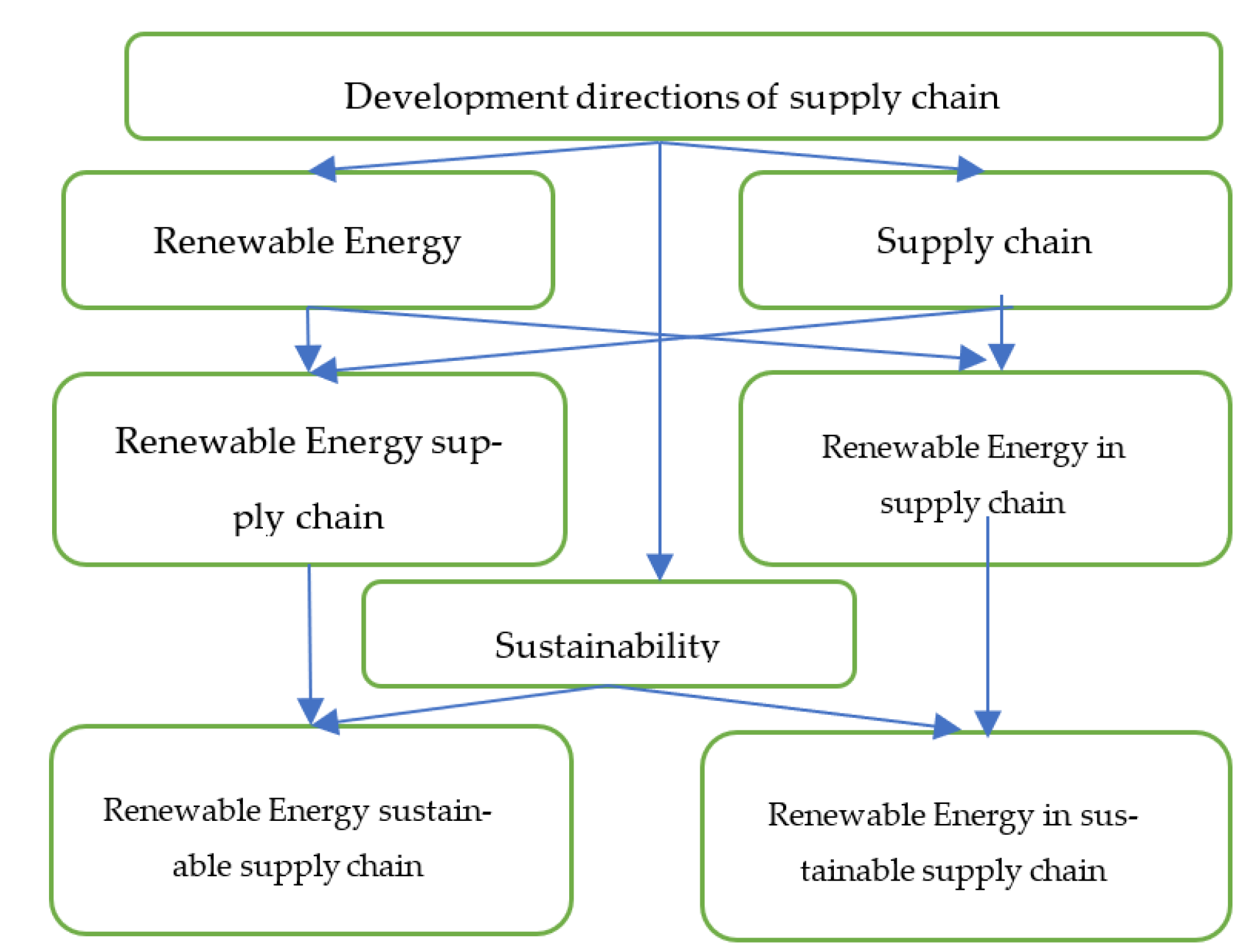
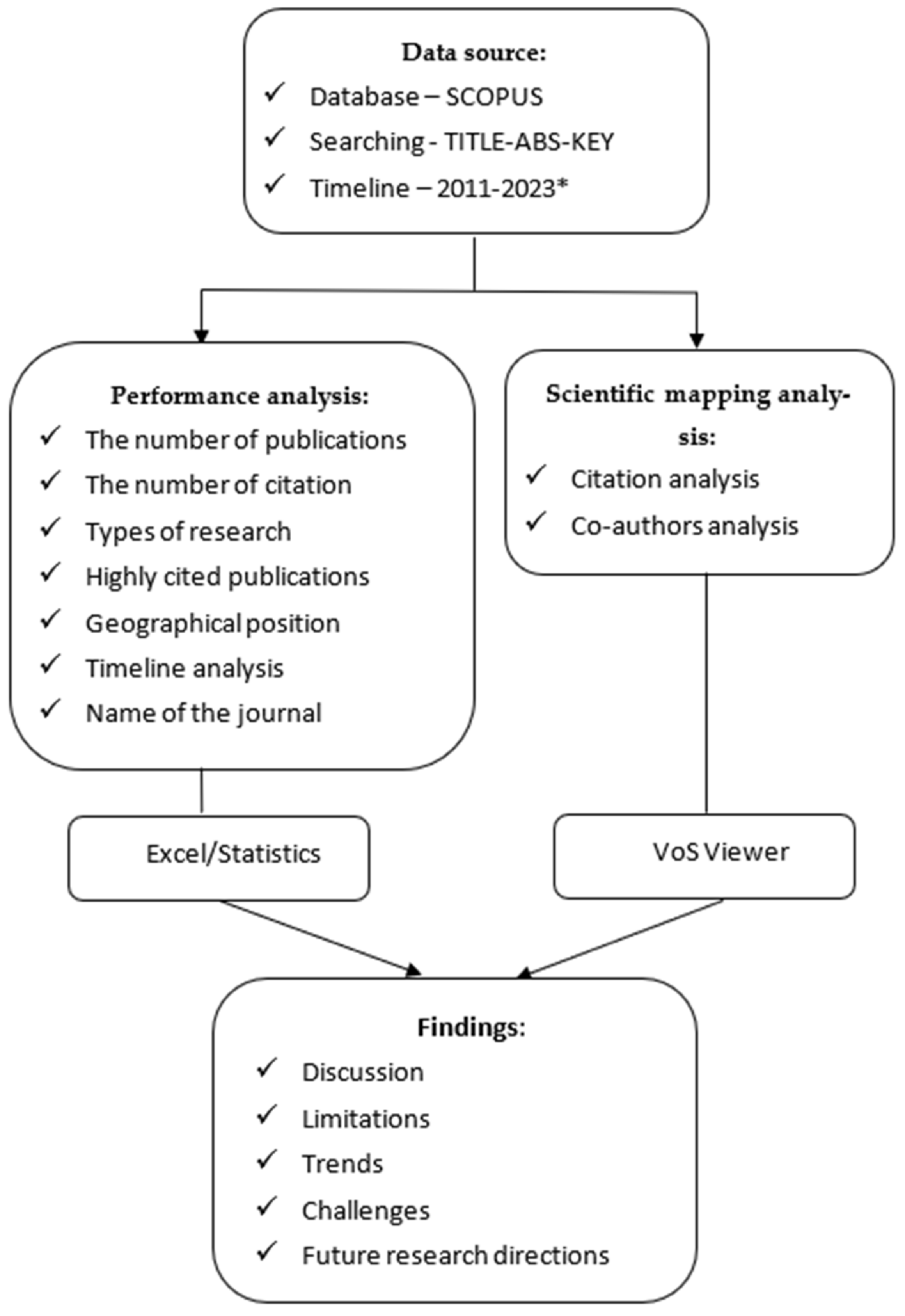
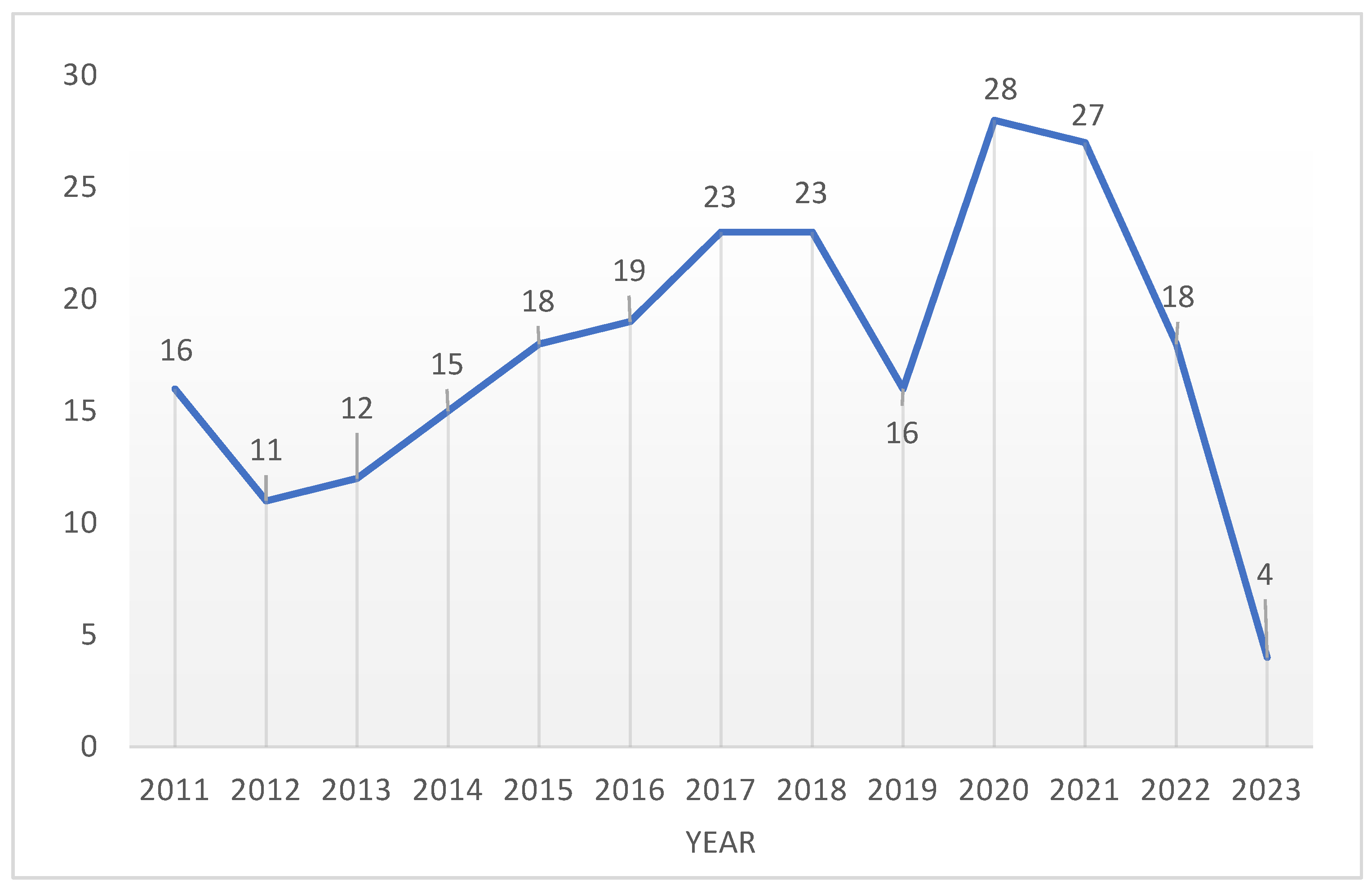
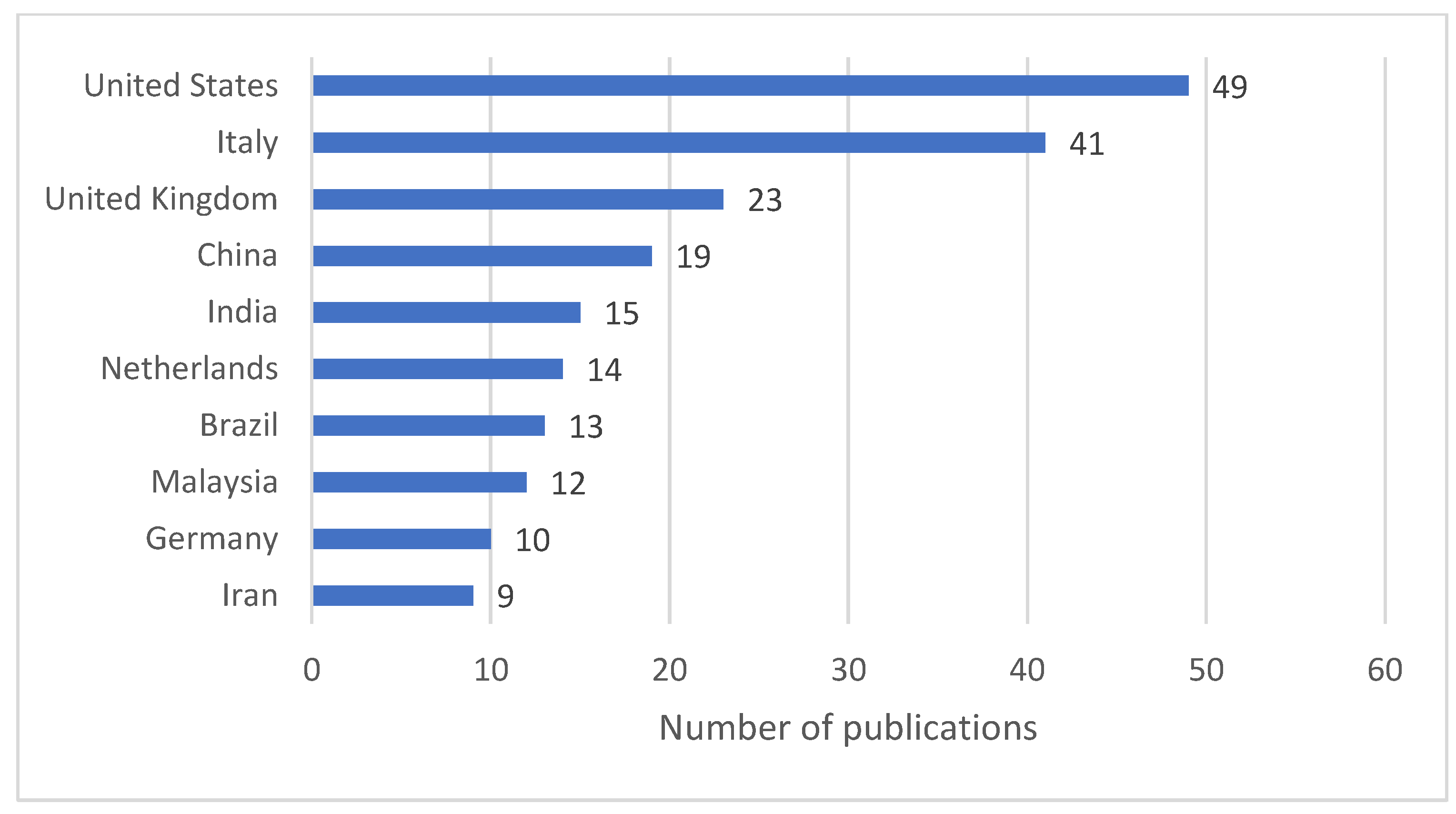
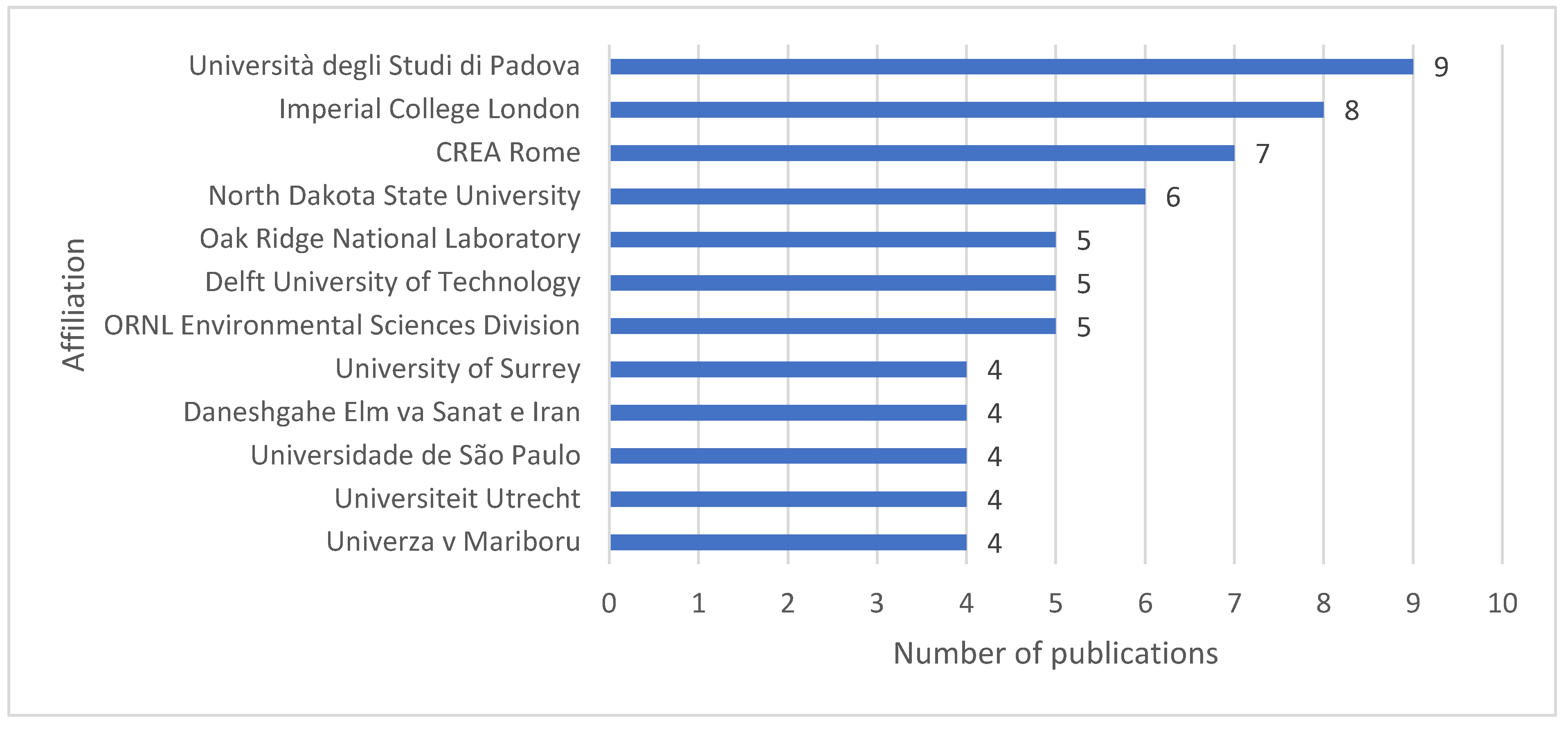
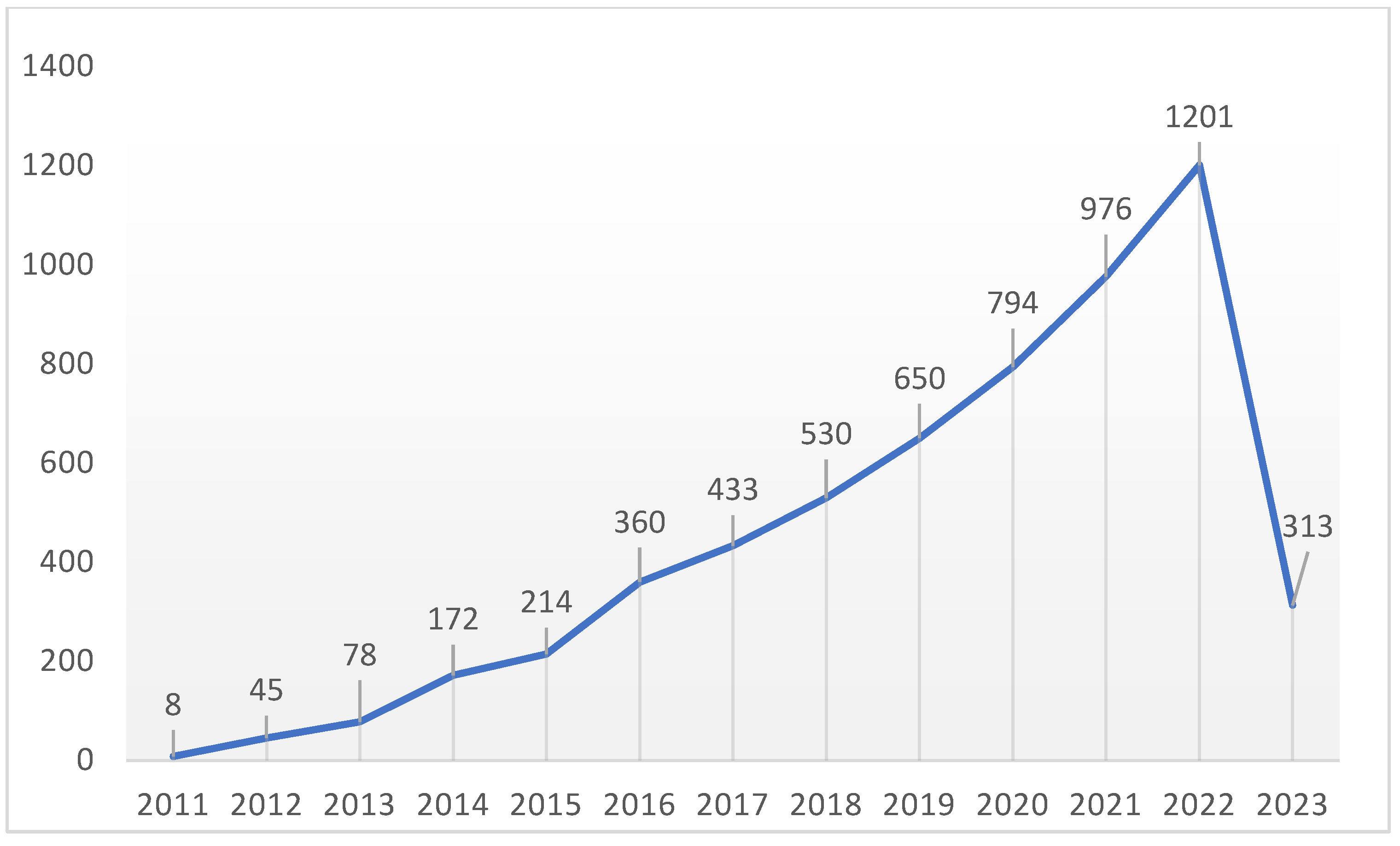
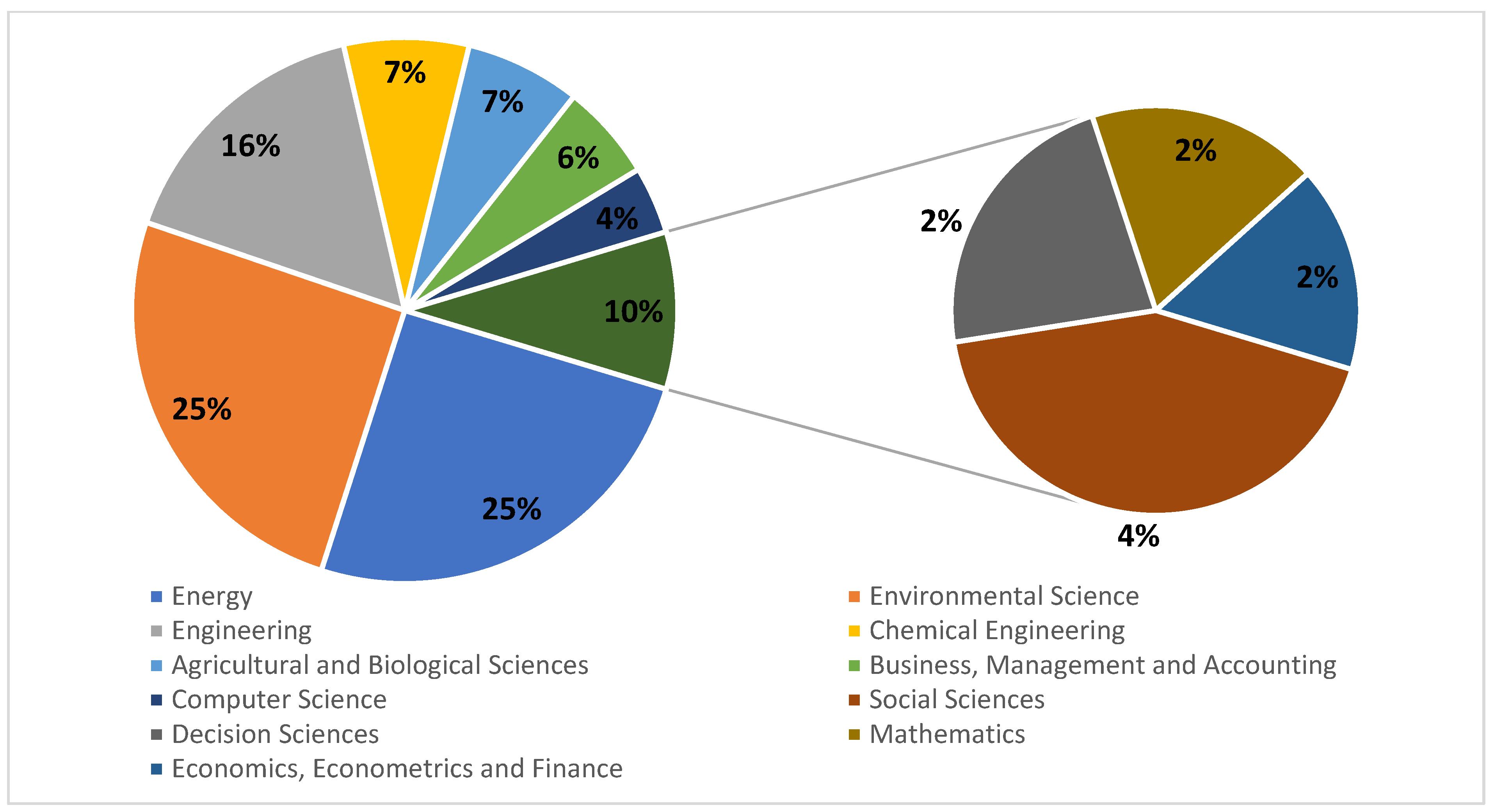
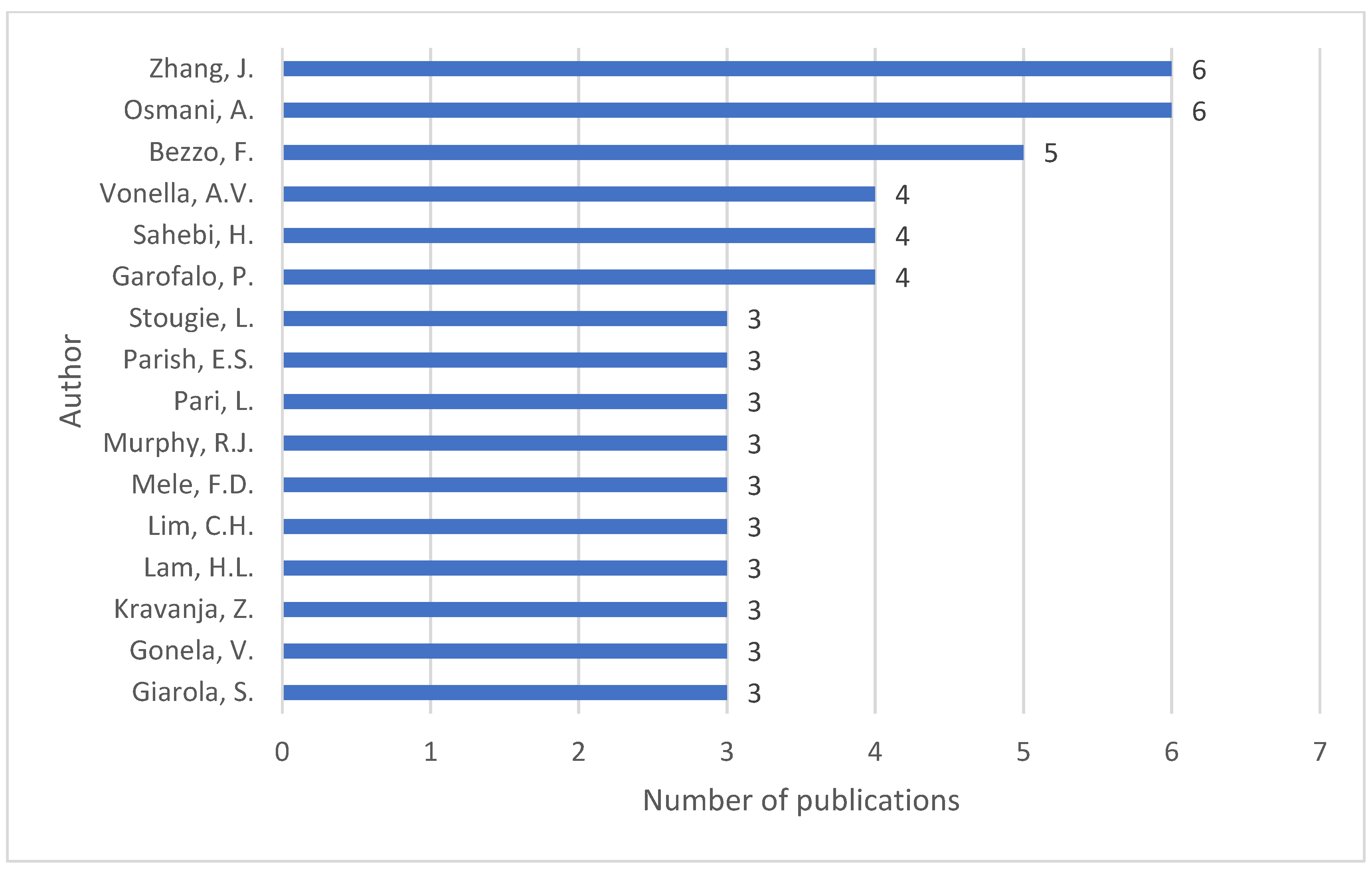
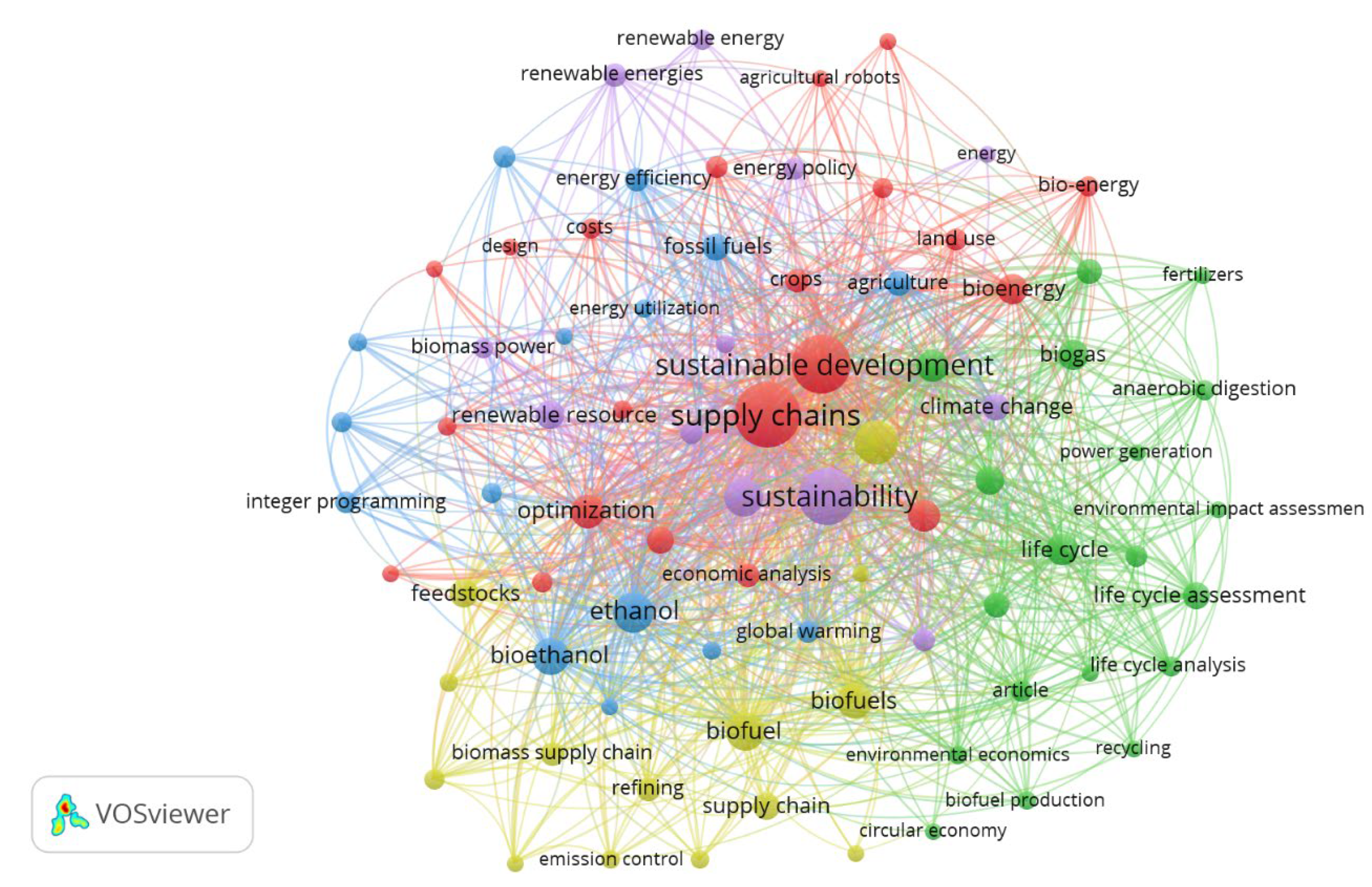
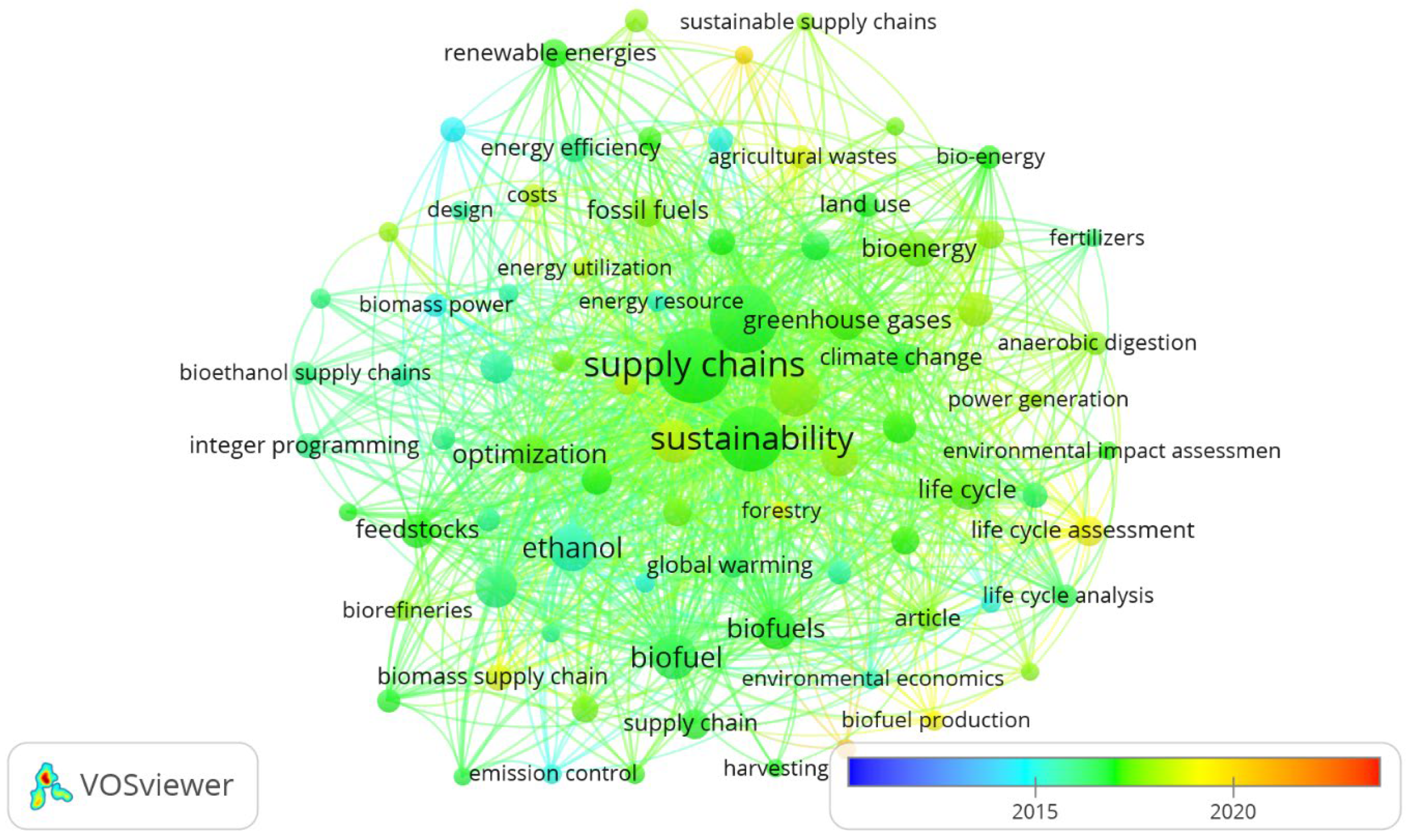
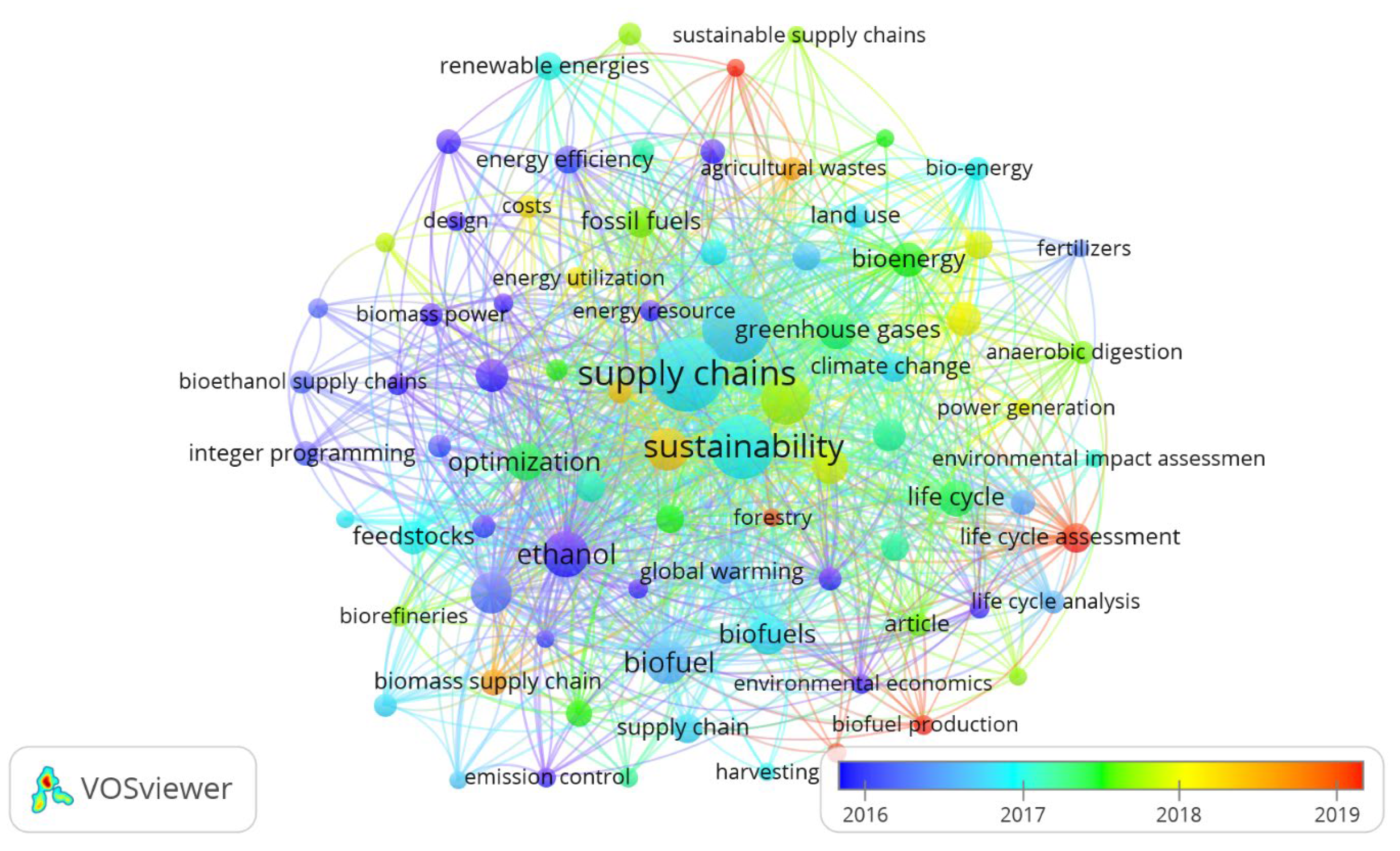
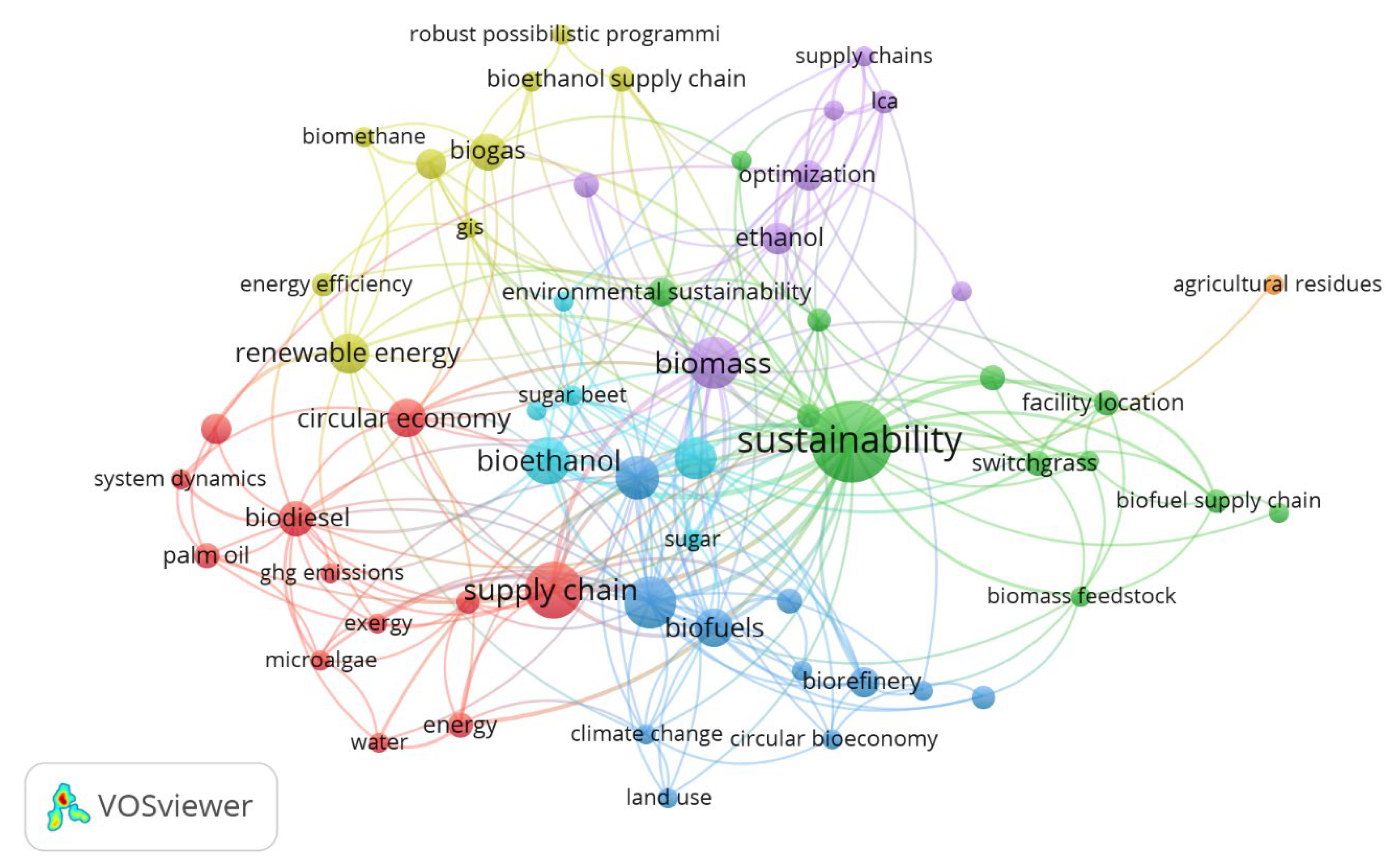
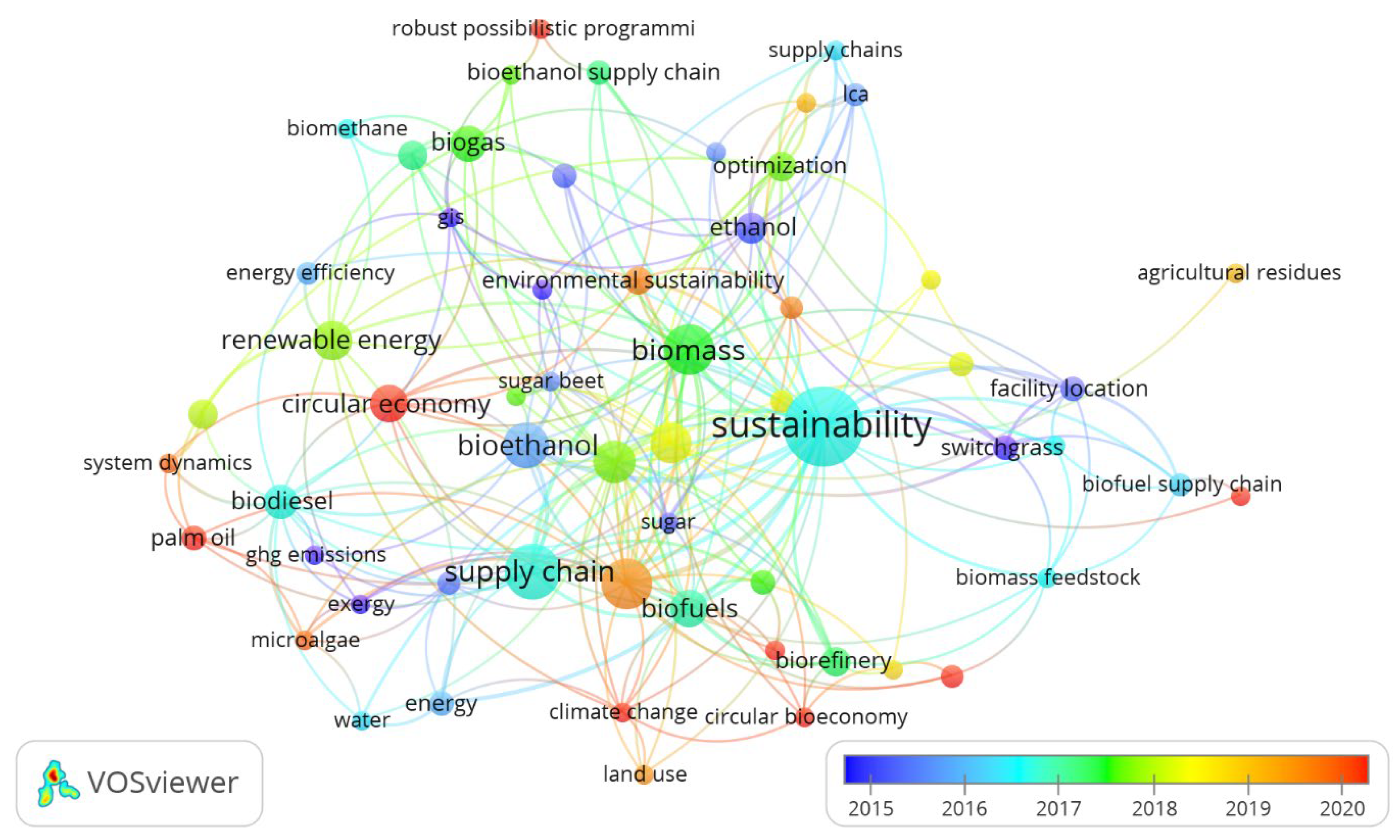
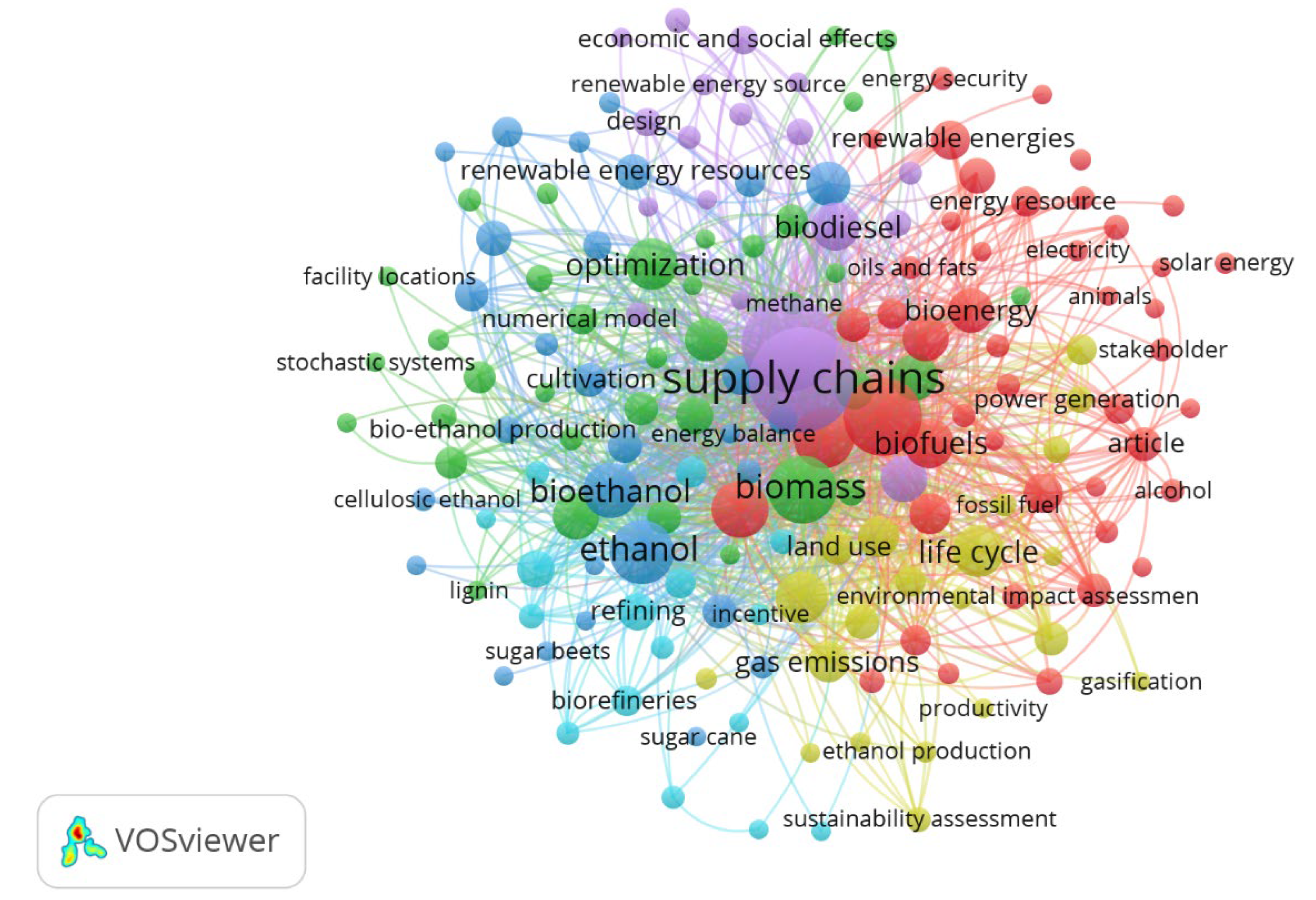
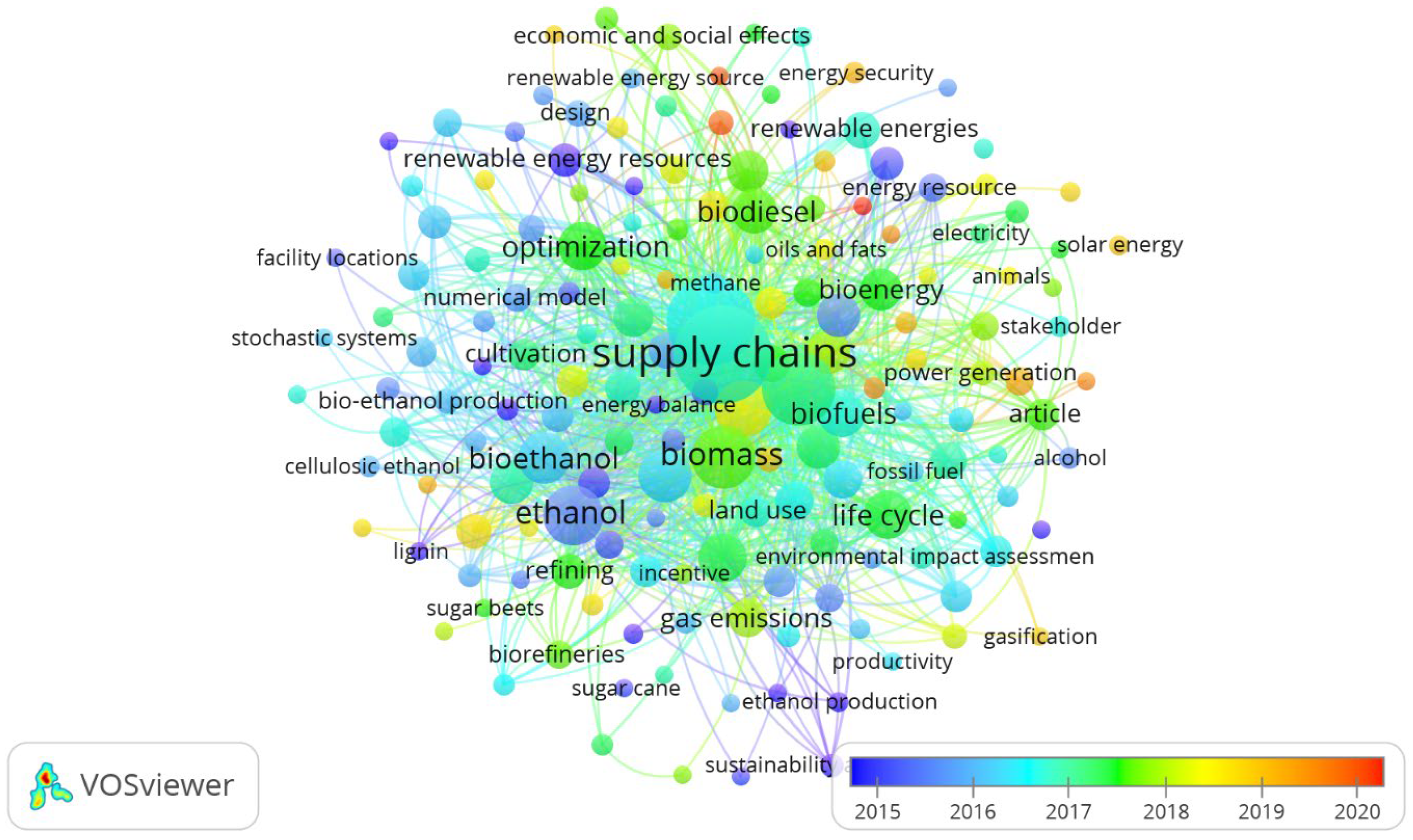
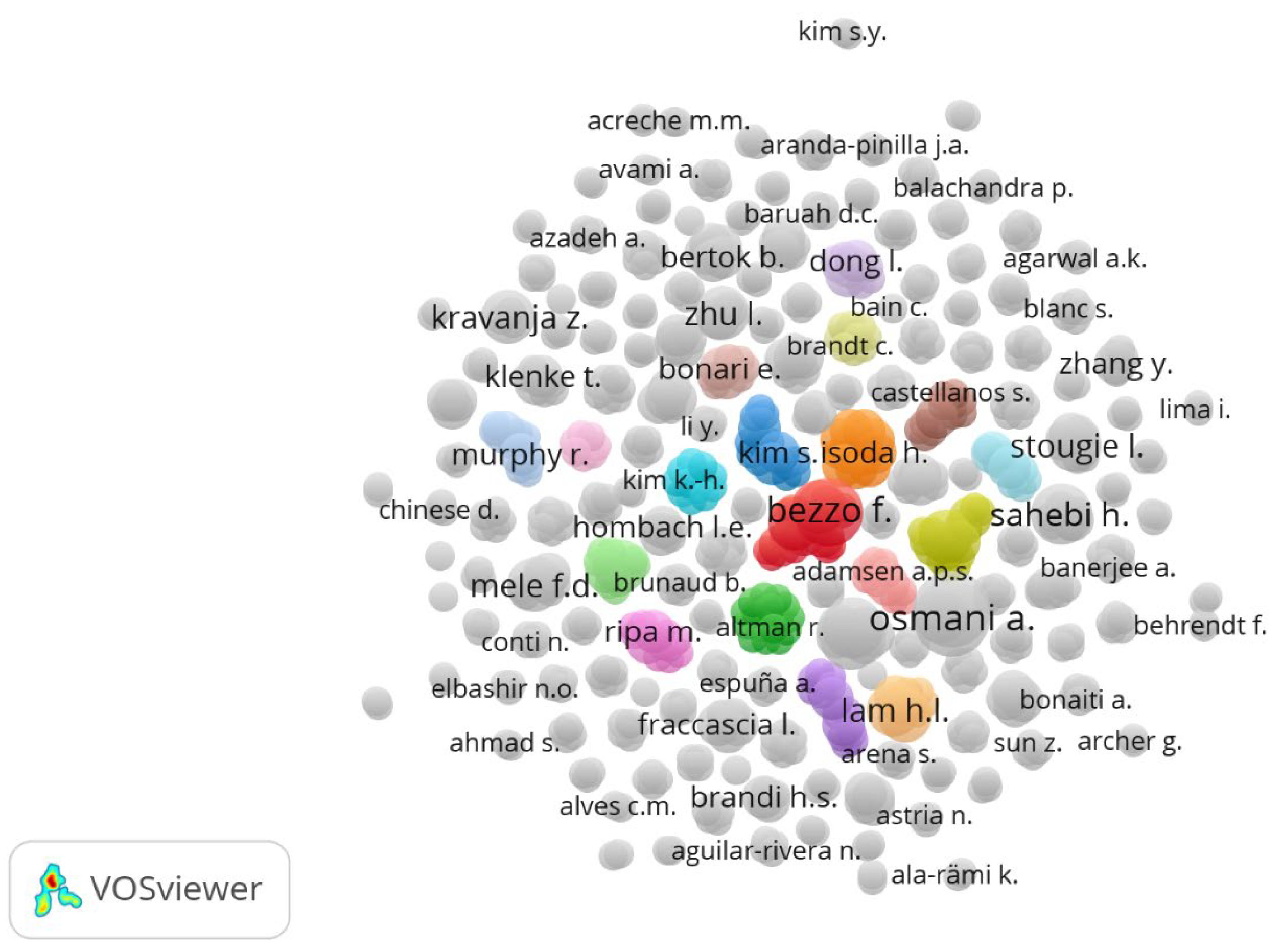
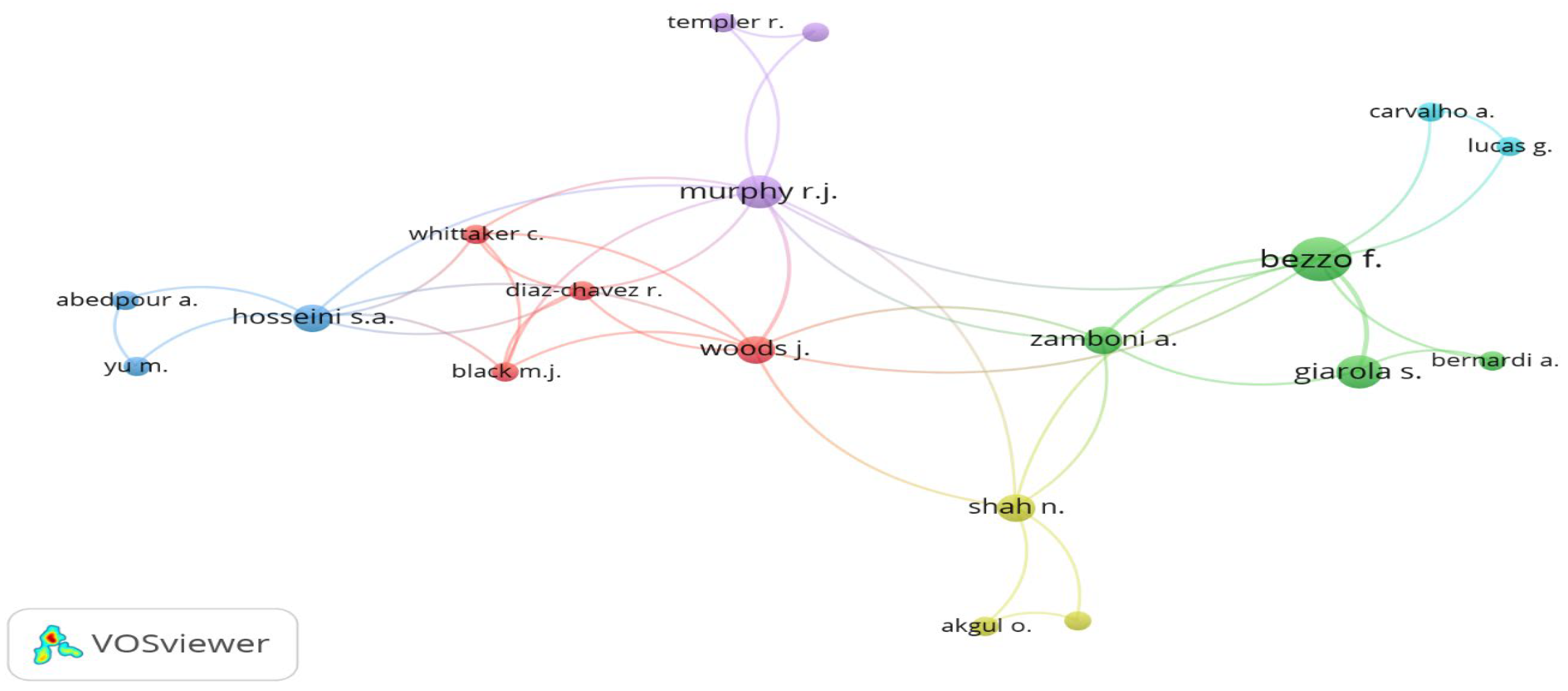
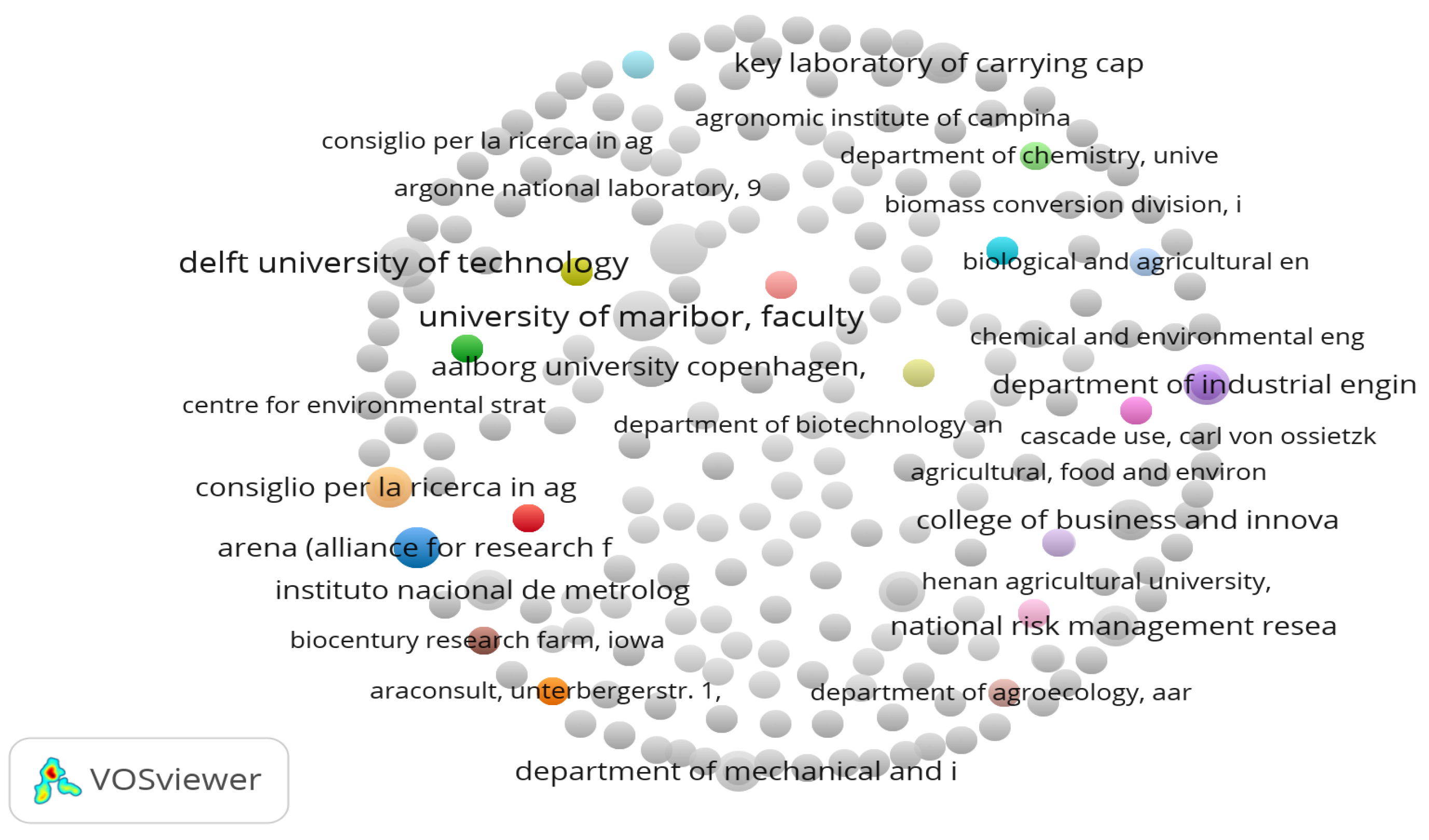
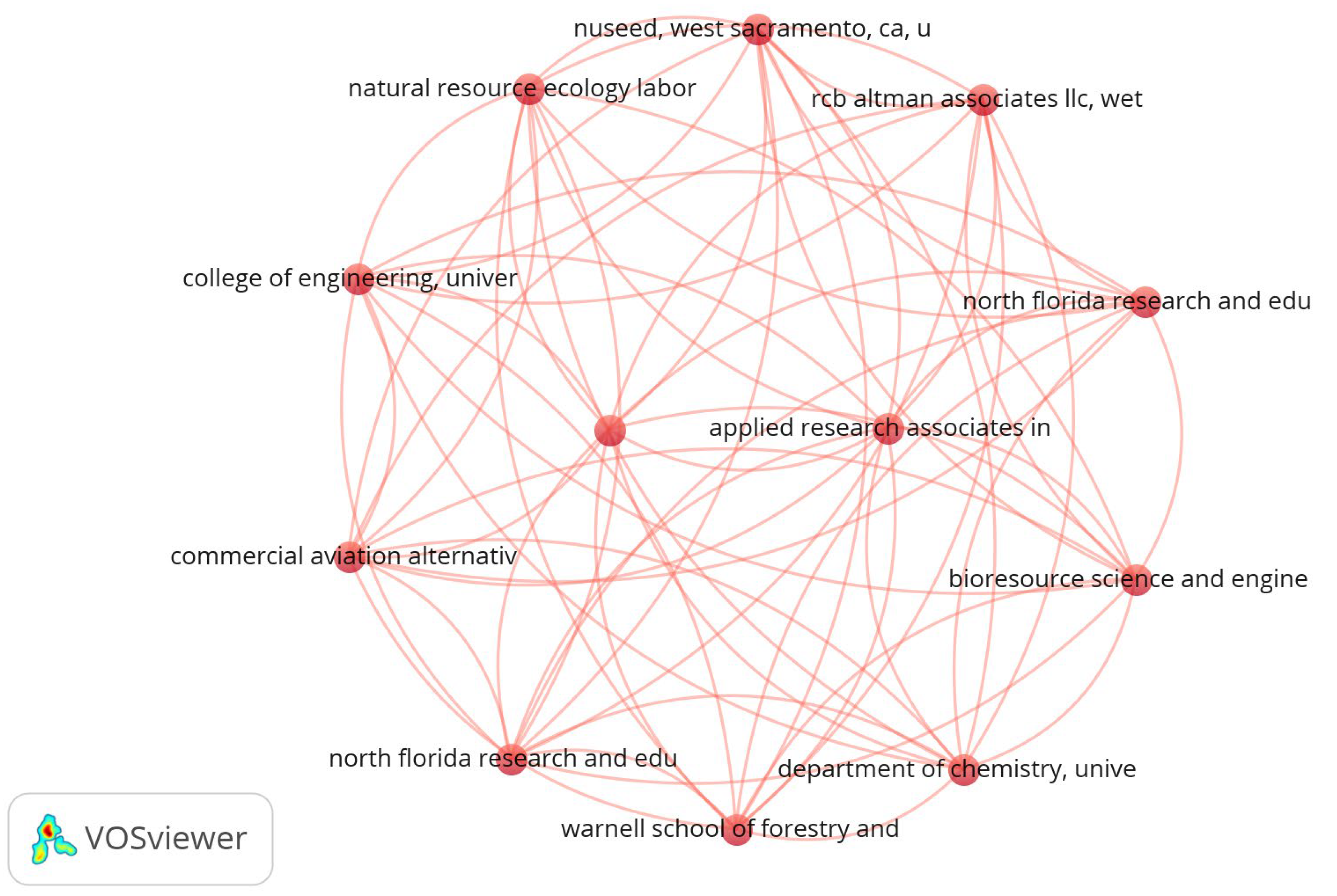
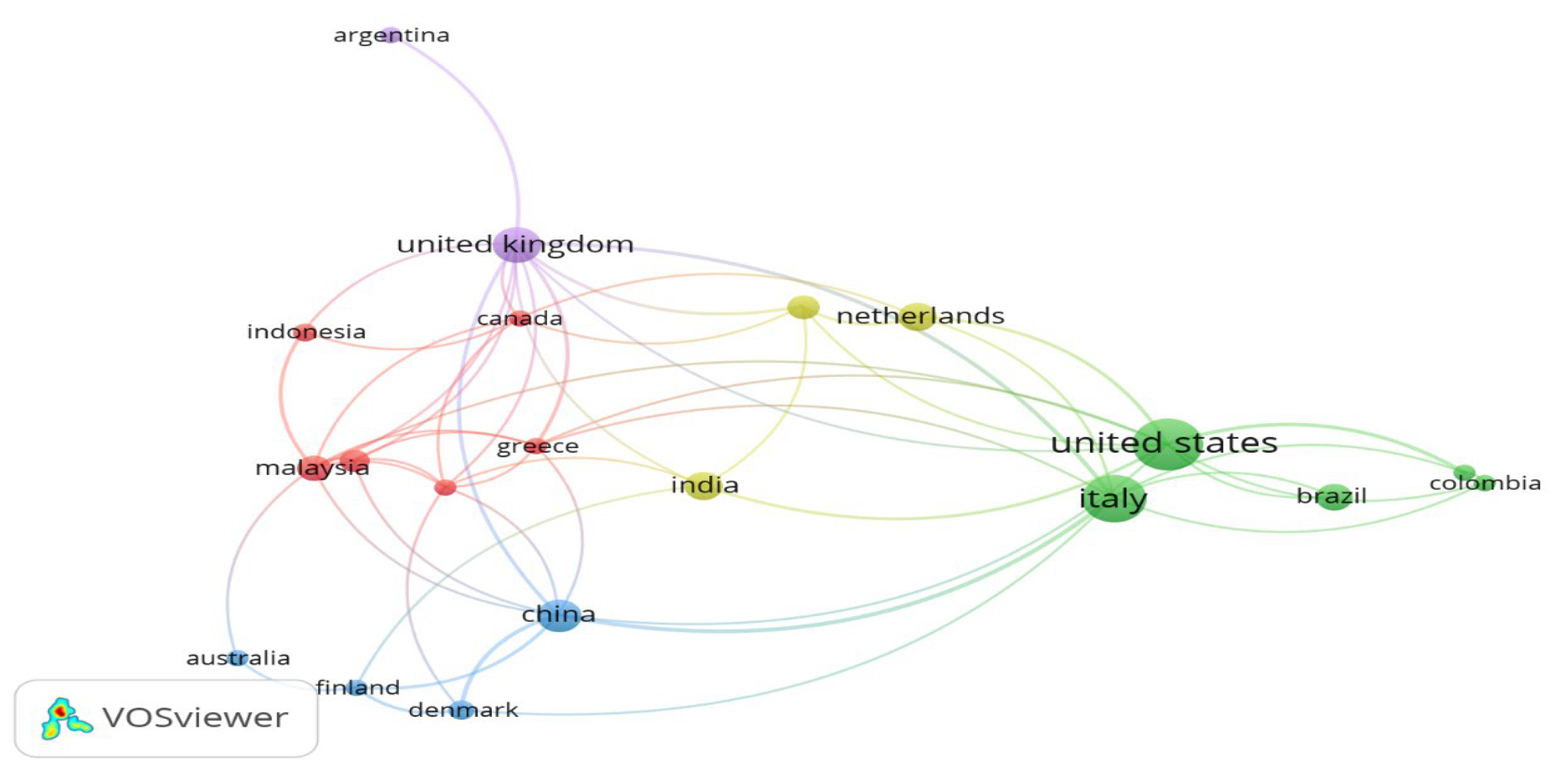
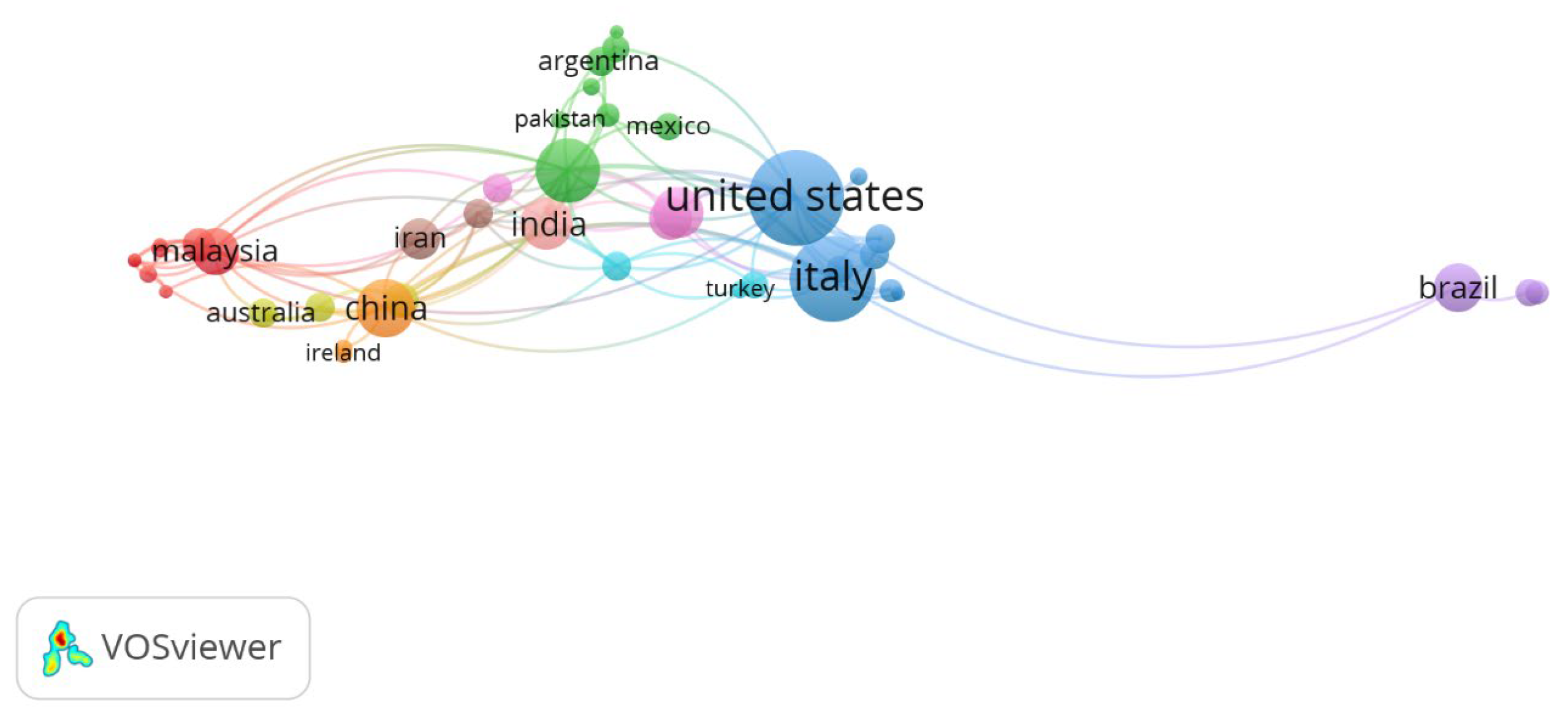
| Document Type | Number of Publications | Percentage |
|---|---|---|
| Article | 162 | 70.4% |
| Book Chapter | 24 | 10.4% |
| Conference Paper | 22 | 9.6% |
| Review | 20 | 8.7% |
| Book | 2 | 0.9% |
| Journal Name | Number of Publications |
|---|---|
| Applied Energy | 19 |
| Journal of Cleaner Production | 16 |
| Sustainability (Switzerland) | 12 |
| Biomass And Bioenergy | 9 |
| Energy | 9 |
| Computer Aided Chemical Engineering | 7 |
| Energy Policy | 7 |
| Renewable and Sustainable Energy Reviews | 7 |
| Bioresource Technology | 6 |
| Chemical Engineering Transactions | 5 |
| Clean Technologies and Environmental Policy | 5 |
| Computers and Chemical Engineering | 5 |
| Renewable Energy | 5 |
| Energy Conversion and Management | 4 |
| Authors Name | Title | Year | Affiliation of First Author | Country | Number of Citation | Citation Normalization |
|---|---|---|---|---|---|---|
| Ahmad, S., Tahar, R.M. [17] | “Selection of renewable energy sources for sustainable development of electricity generation system using analytic hierarchy process: A case of Malaysia” | 2014 | Universiti Malaysia Pahang | Malaysia | 357 | 5.69 |
| Shih, C.F., Zhang, T., Li, J., Bai, C. [18] | “Powering the Future with Liquid Sunshine” | 2018 | University of Chinese Academy of Sciences | China | 351 | 10.22 |
| Santibañez-Aguilar, J.E., González-Campos, J.B., Ponce-Ortega, J.M., Serna-González, M., El-Halwagi, M.M. [19] | “Optimal planning and site selection for distributed multiproduct biorefineries involving economic, environmental and social objectives” | 2014 | Universidad Michoacana de San Nicolás de Hidalgo | Mexico | 221 | 3.46 |
| Parajuli, R., Dalgaard, T., Jørgensen, U., Adamsen, A.P.S., Knudsen, M.T., Birkved, M., Gylling, M., Schjørring, J.K. [20] | “Biorefining in the prevailing energy and materials crisis: A review of sustainable pathways for biorefinery value chains and sustainability assessment methodologies” | 2015 | Aarhus University | Denmark | 183 | 3.84 |
| Zhang, J., Osmani, A., Awudu, I., Gonela, V. [21] | “An integrated optimization model for switchgrass-based bioethanol supply chain” | 2013 | North Dakota State University | United States | 143 | 3.43 |
| Schaubroeck, T., De Clippeleir, H., Weissenbacher, N., Dewulf, J., Boeckx, P., Vlaeminck, S.E., Wett, B. [22] | “Environmental sustainability of an energy self-sufficient sewage treatment plant: Improvements through DEMON and co-digestion” | 2015 | Ghent University | Belgium | 115 | 2.41 |
| Miret, C., Chazara, P., Montastruc, L., Negny, S., Domenech, S. [23] | “Design of bioethanol green supply chain: Comparison between first and second generation biomass concerning economic, environmental and social criteria” | 2016 | Université de Toulouse | France | 105 | 4.39 |
| Akgul, O., Shah, N., Papageorgiou, L.G. [24] | “Economic optimisation of a UK advanced biofuel supply chain” | 2012 | University College London | United Kingdom | 102 | 4.27 |
| Osmani, A., Zhang, J. [25] | “Stochastic optimization of a multi-feedstock lignocellulosic-based bioethanol supply chain under multiple uncertainties” | 2013 | North Dakota State University | United States | 94 | 2.26 |
| Kajaste, R. [26] | “Chemicals from biomass—Managing greenhouse gas emissions in biorefinery production chains—A review” | 2014 | Aalto University | Finland | 89 | 1.39 |
| Cluster | Item (Keywords) | Link | Total Link Streight | Occurrence |
|---|---|---|---|---|
| 1—red (21 items) sustainable supply chain development | supply chain | 80 | 1479 | 149 |
| sustainable development | 80 | 1237 | 120 | |
| optimization | 77 | 439 | 38 | |
| bioenergy | 70 | 337 | 33 | |
| biodisel | 70 | 286 | 35 | |
| 2—green (19 items) environmental impact and pollution | greenhous gasses | 77 | 461 | 36 |
| life cycle | 74 | 440 | 35 | |
| environmental impact | 77 | 365 | 30 | |
| life cycle assesment | 66 | 277 | 24 | |
| gas emission | 69 | 276 | 22 | |
| 3—blue (15 items) energy sources and agriculture | ethanol | 78 | 647 | 56 |
| bioethanol | 79 | 528 | 46 | |
| Fossil fuels | 76 | 296 | 27 | |
| agriculture | 73 | 274 | 23 | |
| global warming | 70 | 266 | 16 | |
| 4—yellow (14 items)—biofuels | biomas | 70 | 316 | 29 |
| biofuel | 79 | 578 | 52 | |
| biofuels | 79 | 482 | 43 | |
| feedstocks | 70 | 316 | 29 | |
| rafining | 65 | 203 | 19 | |
| supply chain | 65 | 160 | 24 | |
| 5—Purple (12 items) renewable resources in SCM | sustainability | 80 | 1080 | 150 |
| supply chain management | 80 | 496 | 50 | |
| renewable resources | 68 | 272 | 30 | |
| climate change | 74 | 268 | 25 | |
| greenhouse gas | 68 | 268 | 25 |
Disclaimer/Publisher’s Note: The statements, opinions and data contained in all publications are solely those of the individual author(s) and contributor(s) and not of MDPI and/or the editor(s). MDPI and/or the editor(s) disclaim responsibility for any injury to people or property resulting from any ideas, methods, instructions or products referred to in the content. |
© 2023 by the authors. Licensee MDPI, Basel, Switzerland. This article is an open access article distributed under the terms and conditions of the Creative Commons Attribution (CC BY) license (https://creativecommons.org/licenses/by/4.0/).
Share and Cite
Tundys, B.; Wiśniewski, T. Renewable Energy Supply Chains—Text Mining and Co-Occurrence Analysis in the Context of the Sustainability. Energies 2023, 16, 4761. https://doi.org/10.3390/en16124761
Tundys B, Wiśniewski T. Renewable Energy Supply Chains—Text Mining and Co-Occurrence Analysis in the Context of the Sustainability. Energies. 2023; 16(12):4761. https://doi.org/10.3390/en16124761
Chicago/Turabian StyleTundys, Blanka, and Tomasz Wiśniewski. 2023. "Renewable Energy Supply Chains—Text Mining and Co-Occurrence Analysis in the Context of the Sustainability" Energies 16, no. 12: 4761. https://doi.org/10.3390/en16124761
APA StyleTundys, B., & Wiśniewski, T. (2023). Renewable Energy Supply Chains—Text Mining and Co-Occurrence Analysis in the Context of the Sustainability. Energies, 16(12), 4761. https://doi.org/10.3390/en16124761







